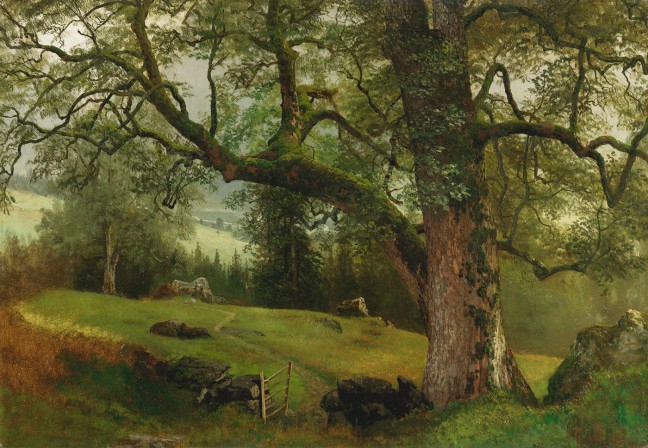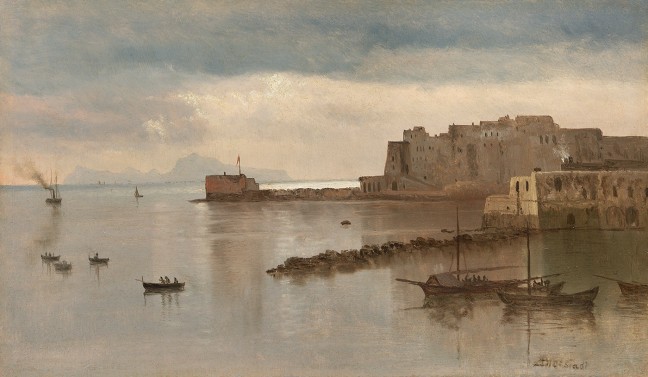Biography - Questroyal Fine Art, LLC, New York, New York
By William Tylee Ranney Abbott (images added)Albert Bierstadt was one of the most acclaimed and internationally recognized American landscape artists of his time. His paintings, characterized by magnificent and grandiose landscapes, exemplify the romantic and economically robust culture of late nineteenth-century America.
I. Biography
II. Chronology
III. Collections
IV. Exhibitions
V. Notes
VI. Suggested Resources
I. Biography
Bierstadt was born in 1830 near modern day Düsseldorf, Germany, and immigrated to New Bedford, MA with his family when he was two years old. In 1853 the artist returned to Germany where he enrolled in the highly regarded Düsseldorf Art Academy. While in Europe, Bierstadt befriended the American artists Emanuel Leutze, T. Worthington Whittredge, William Stanley Haseltine, and Sanford Robinson Gifford. This group of artists traveled extensively throughout Europe, executing sketches of European scenery ranging from the mountainous landscapes of the Swiss Alps to the beaches of the Amalfi Coast.
When he returned to the United States, in 1857, Bierstadt completed a number of full-scale studio paintings based on studies he executed in Europe. He experienced national success for the first time with his entry for the 1858 National Academy of Design Annual, Lake Lucerne (1858, National Gallery of Art, Washington). In 1859, in hopes of creating a series of landscapes, he joined Colonel Frederick West Lander’s government expedition to the Western United States. While on this expedition, destined for Wyoming, he worked as a photographer and prepared numerous studies that later served as models for the finished oil paintings he created in his studio.1
Bierstadt returned from his trip to the West in 1860 and moved to New York City, where he rented a studio in the Tenth Street Studio Building, which also housed a number of his friends and well-known contemporaries including Whittredge, Gifford, Kensett, John William Casilear, Frederic Edwin Church, and Winslow Homer. During this time the young artist summered in the White Mountains, and joined his friend Leutze on an excursion into the war-torn areas of the country.
In 1863, after a number of successful exhibitions in the city, he once again set out for the West, destined for California and in the company of writer Fitz Hugh Ludlow,. After passing through Denver, Salt Lake City, Lake Tahoe, and San Francisco, Bierstadt found himself in the Yosemite Valley and proclaimed, “We are now here in the Garden of Eden I call it. The most magnificent place I was ever in, I employ every moment painting from nature…We camp out altogether, get no news, and do not care for any for we are perfectly happy with the fine scenery, trout, ducks, deer, etc.”2 The traveling companions moved on from Yosemite to the Northwest where they were mesmerized by the peaks of Oregon before returning to San Francisco and then New York.
Upon his return to New York, Bierstadt set about painting a number of large-scale canvases that quickly caught the attention of the American public. His entry for the Metropolitan Sanitary Fair in 1864, The Rocky Mountains, Lander’s Peak (1863, Metropolitan Museum of Art, New York), a result of his first trip west, established him as a rival to Church and helped secure his position as America’s leading landscape painter.
In 1866, shortly after the death of his father, Bierstadt married Rosalie Ludlow, the former wife of his traveling companion, and completed the construction of Malkasten, a summer resident and studio overlooking the Hudson River at Irvington-on-Hudson, New York. His work, now well established, continued to experience great popularity in the US and abroad for their exemplification of manifest destiny, especially among the newly wealthy industrial upper middle class.
The success that Bierstadt experienced in the Unites States led him back to Europe, from 1867–69, where he exhibited his now infamous renditions of the American West. Bierstadt’s work was widely accepted in Europe and praise quickly transformed into countless awards and accolades including a private audience with Queen Victoria and the Prince of Wales in 1868. His paintings were exhibited in Paris, London, Rome, and Berlin, where he received a gold medal at the Royal Academy. On this trip the artist spent time sketching in the Alps, took studios in Rome and Paris, and completed a painting for the Berlin Royal Academy Exhibition. By 1869, Bierstadt returned to New York City, but quickly ventured off to visit his brother near Niagara Falls.
For his third trip west, in 1871, the artist traveled on the newly constructed transcontinental railroad and arrived in San Francisco by way of Denver. During this time Bierstadt was selected to help plan a visit from the Grand Duke Alexis of Russia, for whom he arranged a buffalo hunt with the famed Buffalo Bill Cody. While in southern California he continued to sketch and paint a variety of scenes, ranging from seascapes to winter landscapes in Yosemite and the High Sierras. At this time he also met and befriend the budding American photographer Edward Muybridge, who is now considered by many to be the father of the modern motion picture. Bierstadt returned to New York with his wife in 1873.
During the later part of his career, Bierstadt found himself fighting off a shift in popularity away from the academic style of the Düsseldorf School towards the Barbizon School of France. At this time the artist began to focus his energy on getting his work more national recognition. By 1875 he had experienced some success in this, especially with his
The Discovery of the Hudson (1874, United States Capital, Washington),
which came to hang in the US Capital Building after winning a House of Representatives vote over a work by Thomas Moran. Bierstadt also gifted works to other prominent institutions throughout his life, including the Pennsylvania Academy of Fine Art and the White House. It was also around this time that the Bierstadts began to regularly visit Nassau in the Bahamas with hopes of bettering Mrs. Bierstadt’s consumption.
In the last quarter of the nineteenth century, Bierstadt continued to travel extensively in Europe, spent a year in London, Paris, and Cannes and regularly visited the American West. In the 1880s, he was especially sporting and shot a near record moose, became a founding member of the Boone and Crockett Club, and painted a number of sporting scenes. In 1881 the artist had his first visit to Yellowstone National Park, where he sketched and painted local scenery. Sadly, a year later, in 1882, Malkasten burned to the ground and lost the artist nearly $175,000 in art and all of his beloved western artifacts. The ever-determined Bierstadt unrelentingly painted and petitioned, resulting in some of his most impressive works including
The Last of the Buffalo (1888, The Corcoran Gallery of Art, Washington, DC)
and The Landing of Columbus (1892, City of Plainfield, New Jersey).
Ever the social entertainer, studio visits at this time and throughout the artist’s career would often result in token gifts, such as a painted seashell or a famous “Bierstadt Butterfly” for the ladies. Sadly, Bierstadt’s beloved companion, Rosalie, finally succumbed to her illness in 1893.
In the final years of the artist life, he continued to be a presence in the New England social scene, eventually marrying the wealthy Mary Hicks Steward. Unfortunately the extravagant lifestyle to which Bierstadt was accustom eventually resulted in his near bankruptcy, forcing him to sell 150 paintings to appease his creditors. Possibly the cause of some of this economic hardship was the artist’s forays into his own inventing or investing and promotion of others. Finally, the great American painter, traveler, explorer, entertainer, unofficial diplomat, and inventor passed away on February 18th 1902.
During his time Albert Bierstadt was widely recognized as one of the most capable and gifted landscape painters in America. His grandiose and romantic painting style sought to capture both the realism of the far off places he visited and the atmospheric feelings experience by being at those places. He continues to be recognized for his importance to American painting, having works housed in America’s most prestigious institutions.
II. Chronology
1830 Born on January 7th near Dusseldorf, Germany
1832 Travels with family to New Bedford, Massachusetts
1851 Holds his first exhibitions, in Boston and New Bedford, MA and has his first sale
1853 Returns to Düsseldorf to study, meets and befriends Emanuel Leutze, T. Worthington Whittredge, William Stanley Haseltine, and Sanford Robinson Gifford
1856 Travels throughout Europe, including through Germany, Switzerland, and Italy
1857 Returns to New Bedford, begins teaching and exhibiting, also travels to White Mountains and Newport, Rhode Island
1858 First serious exhibition, includes Lake Lucerne and others at the National Academy of Design in New York City, New York
1859 Travels on Frederick Lander’s exhibition to the American West, upon his return moves to a studio in the Tenth Street Studio, New York
1860 Paints Wind River Country and The Base of the Rocky Mountains, Laramie Peak, elected to the National Academy of Design
1863 Paints The Rocky Mountains, Lander’s Peak, again travels west, this time with author and friend Fitz Hugh Ludlow; it is his first time in the Yosemite Valley
1864 The Rocky Mountains, Lander’s Peak is exhibited at the New York Sanity Fair with much praise, mentioned as a rival to the work of Frederic Church
1865 Begins work on mansion house, Malkasten, in Irvington-on-Hudson, New York
1866 Paints Storm in the Rocky Mountains; marries Rosalie Osborne Ludlow, estranged wife of Fitz Hugh Ludlow
1867 Travels with wife to Europe, visits England, France, Germany, Austria, Switzerland, Italy, and Spain, is awarded the Legion of Honor by Napoleon III
1870 Completes Emerald Pool; embroiled in controversy over his denial of works in the Thompson estate auction
1871 Travels with wife to California where they remain for two years; arranges Western entertainment for the visiting Grand Duke Alexis of Russia
1873 Paints Donner Lake from the Summit and returns to the East with his wife
1875 Completes work on The Discovery of the Hudson, his first National commission
1876 Prominent guest at Government Ball in Ottawa; exhibits at the Philadelphia Centennial
1877 Rocky Mountains, Longs Peak is commissioned by the Earl of Dunraven; begins regular visits to Nassua, Bahamas for the benefit of his wife’s health
1878 Is a guest of the Hayeses at the White House; returns to Europe
1880 Travels extensively on the west coast, through California, Washington, and British Columbia
1881 Visits Yellowstone Park for the first time
1882 His home, Malkasten, burns down
1883 Again travels to Europe, this time seeking investments for a number of patents
1886 Travels to the Midwest, Wisconsin and Lake Superior region; receives the Order of Medjid from the Sultan of Turkey
1891 Travels to Spain, Italy, Portugal, and West Indies; continues studies for The Landing of Columbus
1892 Completes The Landing of Columbus, to be exhibited at the World’s Columbian Exposition
1893 Mrs. Bierstadt dies in Nassua; campaigns for the creation of a National Academy of Art
1894 Marries Mary Hicks Stewart
1901 Last known work (a watercolor) completed; last exhibition during his lifetime held at the Worcester Art Museum, Massachusetts
1902 Dies February 18th in New York City
III. Collections
Albright-Knox Art Gallery, Buffalo, NY
Amon Carter Museum of Western Art, Forth Worth, TX
The Art Museum, Princeton University, NJ
The Brooklyn Museum, New York City, NY
Buffalo Bill Historical Center, The Whitney Gallery of West Art, Cody, WY
Chrysler Museum of Art, Norfolk, VA
The Corcoran Gallery of Art, Washington, DC
Dallas Museum of Fine Arts, TX
Denver Art Museum, CO
Denver Public Library, CO
The Fogg Art Museum, Harvard University, Cambridge, MA
The Gilcrease Museum, Tulsa, OK
Herbert F. Johnson Museum of Art, Cornell University, Ithaca, NY
High Museum of Art, Atlanta, GA
The Hirshhorn Museum and Sculpture Garder, Washington, DC
Indianapolis Museum of Art, IN
Joslyn Art Museum, Omaha, NB
Los Angeles County Museum of Art, CA
The Metropolitan Museum of Art, New York City, NY
The Minneapolis Institute of Arts, MN
Museum of Fine Arts, Boston, MA
National Academy of Design, New York City, NY
National Collection of Fine Arts, Smithsonian Institution, Washington, DC
The New York Historical Society, NY
Phoenix Art Museum, AZ
Speed Art Museum, Louisville, KY
United States Capital, Washington, DC
Wadsorth Anteneum, Harford, CT
The Whitney Museum of American Art, New York City, NY
Yale University Art Gallery, New Haven, CT
IV. Exhibitions
1858-88 National Academy of Design
1858 New Bedford Art Exhibition
1859-67 Pennsylvania Academy of the Fine Arts
1859-64 Boston Athenaeum
1861-81 Brooklyn Art Association
1864 New York Sanitary Exhibition
1867 Cross of Legion of Honor, France
1869, 75, 79, 80, 82, 89 Paris Salon, France
1869, 72 Degrees of Order of St. Stanislaus, Russia
1873, 76, 80 Boston Art Club
1904 Art Institute of Chicago
1964 Santa Barbara Museum of Art
1972 Amon Carter Museum
1972 Whitney Museum of American Art
2002 Montclair Art Museum
V. Notes
1 Gordon Hendricks, Albert Bierstadt: Painter of the American West (New York: Harry Abrams Inc., 1974), pp. 70
2 Elizabeth Mankin Kornhauser, Hudson River School; Masterworks from the Wadsworth Antheneum Museum of Art (New Haven: Yale University Press, 2003), pp. 28
VI. Suggested Resources
Kornhauser, Elizabeth Mankin. Hudson River School; Masterworks from the Wadsworth Antheneum
Museum of Art. New Haven: Yale University Press, 2003
Fischer, Diane. Primitive Visions: Albert Bierstadt discovers America. Montclair: Montclair Art
Museum:, 2001.
Hendricks, Gordon. Albert Bierstadt: Painter of the American west. New York: Harry Abrams
Inc., 1974.
Christie’s 28 November 2012
Seals on the Rocks, executed by Albert Bierstadt circa 1872-1873, is one of only five large-scale oils of the subject and one of three in this series that depict the rock formation known as Muir Bridge, located off the coast of San Francisco (estimate: $1,000,000-1,500,000). Bierstadt made multiple journeys from the East Coast to the far reaches of the Western frontier in search of a pure landscape as untouched by human presence. Among the diverse topography that inspired him during his travels was the coast of California. Bierstadt splendidly portrays the rugged coast and turbulent sea in Seals on the Rocks while imbuing the canvas with a celestial light, juxtaposing the power and sublimity of the natural world, emblematic of his greatest works.
PRICE REALIZED
$794,500
Christie’s May 18, 2011
Albert Bierstadt's paintings of the untamed American West are some of the most significant historical and artistic accomplishments of the 19th century. While other artists had made expeditions throughout the area as early as the 1830s, few could rival Bierstadt in his ability to convey the grandeur of this wondrous region to the American public. Painted circa 1887, The Falls of Saint Anthony depicts the only natural major waterfall on the Upper Mississippi River. Before European exploration, the falls held cultural and political significance for native tribes who frequented the area. The Dakota Indians associated the falls with legends and spirits, including Oanktehi, god of waters and evil, who lived beneath the falling water. Filled with vivid light and dramatic elements, the painting embodies Bierstadt's powerful vision of the pristine, unspoiled Western landscape.
Christie’s 2017
Albert Bierstadt’s epic Lake Tahoe,
Christie’s 2015
Christie’s 2014
Christie’s 2012
PRICE REALIZED
$362,500
Christie’s 2017
Albert Bierstadt’s epic Lake Tahoe,
Christie’s 2015
Christie’s 2014
Christie’s 2012
Christie’s 2007
In Platte River Country
PRICE REALIZED
$2,505,000
Christie’s 2003
Indians Spear Fishing
PRICE REALIZED
$7,321,000
Christie’s 2000
More Christie's
Oregon Trail
PRICE REALIZED
$1,762,500
Rocky Mountain Waterfall
PRICE REALIZED
$1,325,000
Mountainous Landscape by Moonlight
PRICE REALIZED
$1,142,500
Rocky Mountain Goats
PRICE REALIZED
$481,000
A River Landscape, Westphalia
PRICE REALIZED
$338,500
Jungfrau
PRICE REALIZED
$242,500
Brook in Woods
PRICE REALIZED
$122,500
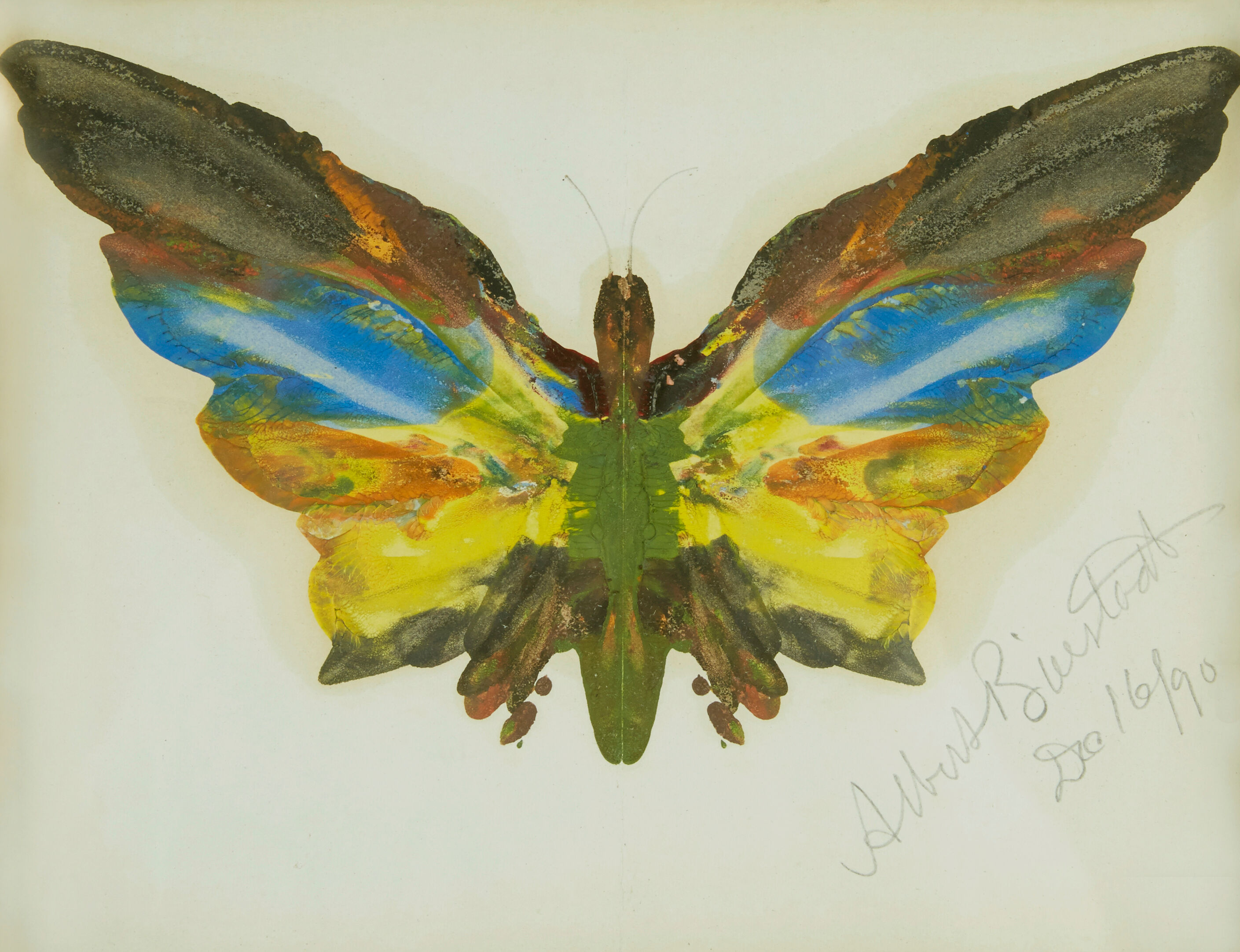
US$ 12,000 - 18,000
SOTHEBY’S DEC 4 2013
Estimate 200,000 — 300,000
Lot Sold 269,000
Estimate 1,500,000 — 2,500,000
Lot Sold 2,105,000
Sotheby's 2012
ALBERT BIERSTADT
STUDY OF A MOOSE
Estimation 15,000 — 25,000 Lot vendu 34,375
ALBERT BIERSTADT
MOUNTAIN LANDSCAPE
Estimation 10,000 — 15,000
Lot vendu 10,000
Sotheby's April 16, 2014
ALBERT BIERSTADT
A PATH THROUGH THE FOREST
Estimate 15,000 — 25,000 LOT SOLD. 28,100
Sotheby's May 21, 2014
ALBERT BIERSTADT
1830 - 1902
1830 - 1902
YOSEMITE VALLEY
Estimate 1,000,000 — 1,500,000 LOT SOLD. 2,517,000
Sotheby's October 23, 2013
ALBERT BIERSTADT
THE LOOKOUT
Estimate 50,000 — 70,000 LOT SOLD. 59,375 USD
Estimate 50,000 — 70,000 LOT SOLD. 59,375 USD
Albert Bierstadt (1830–1902)
A Trail through the Trees
Oil on board
20½ x 29 7/16 inches
Monogrammed lower left: ABierstadt


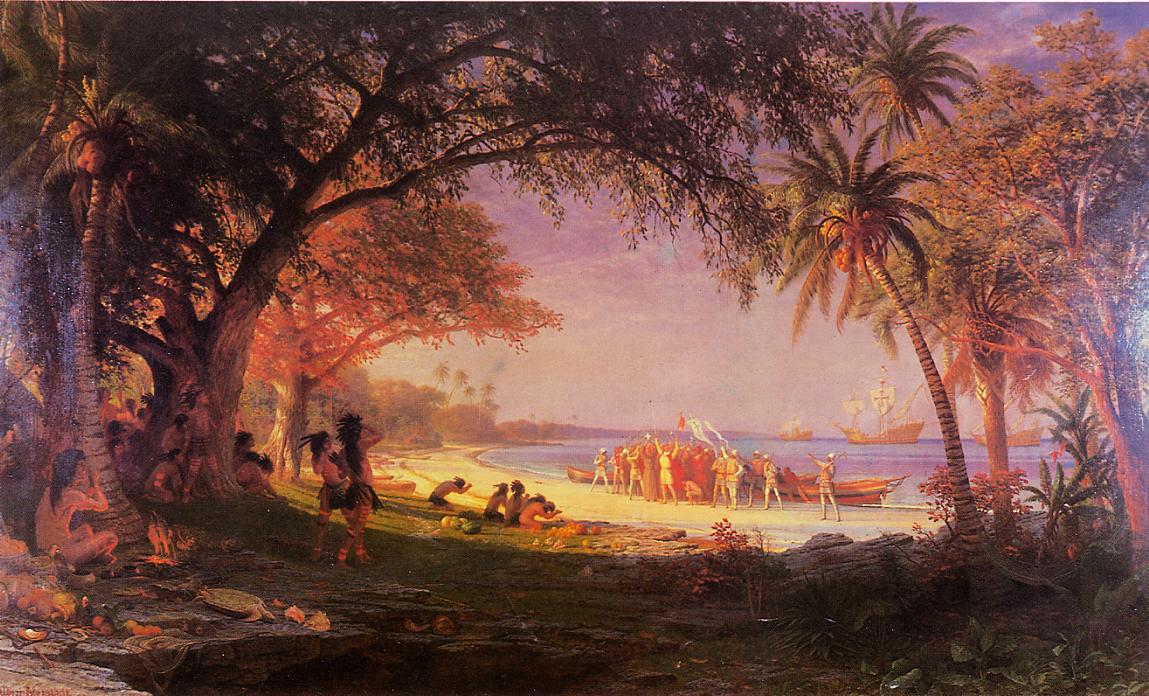
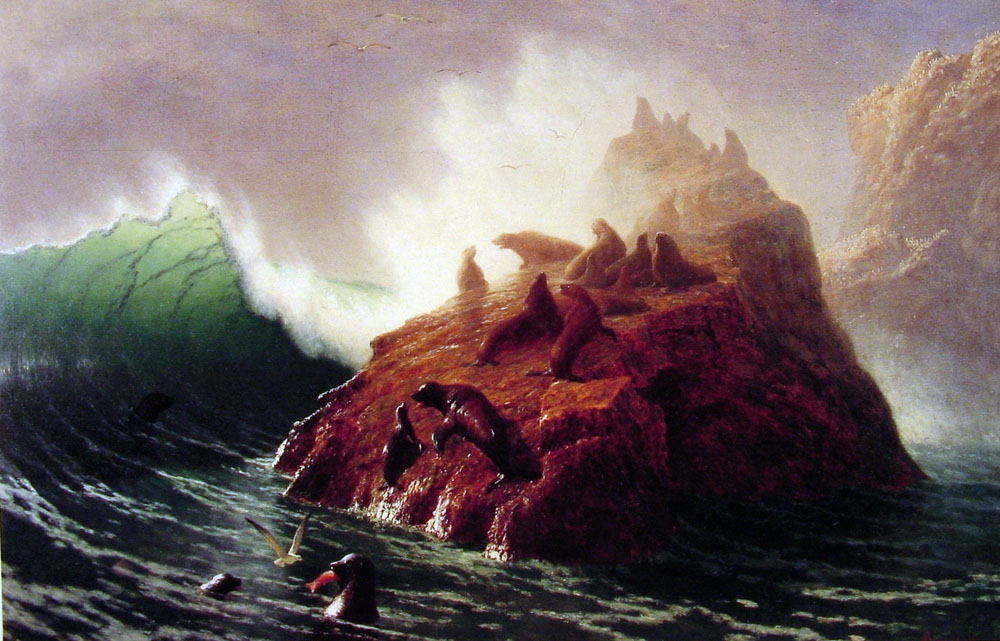
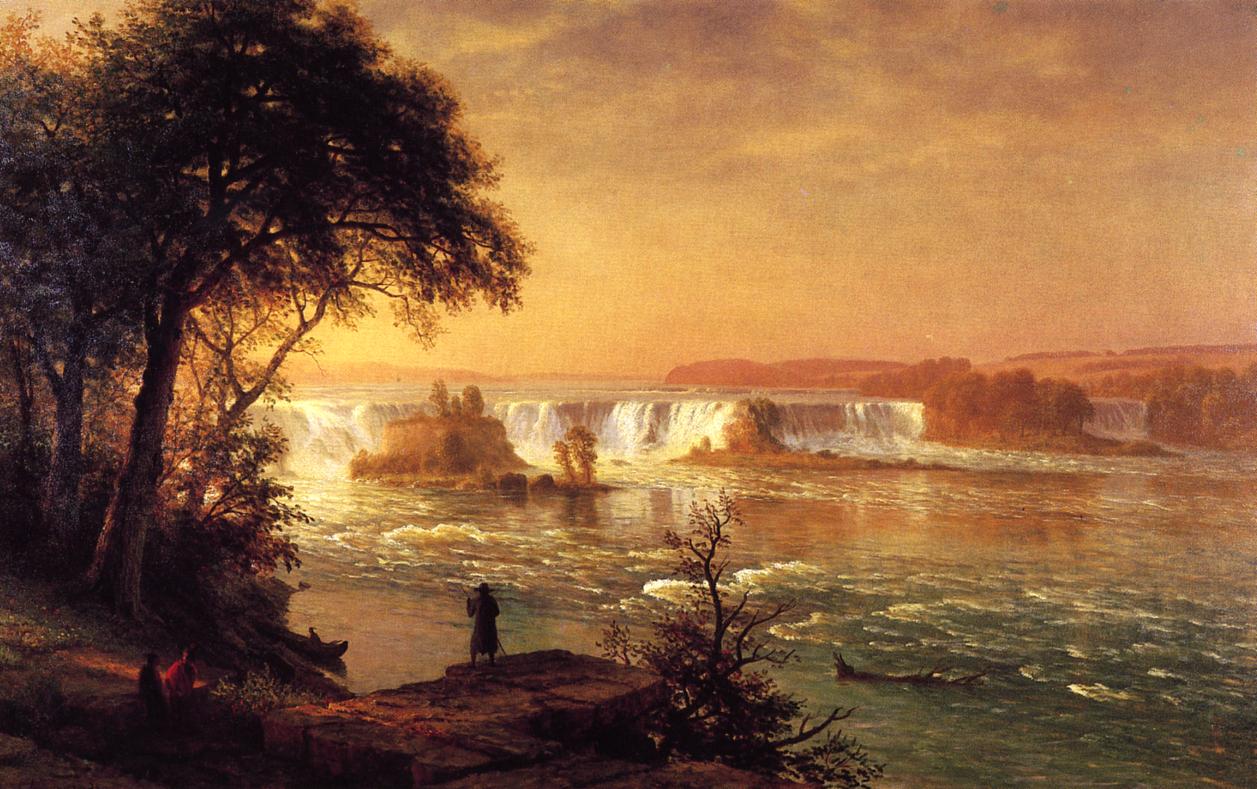

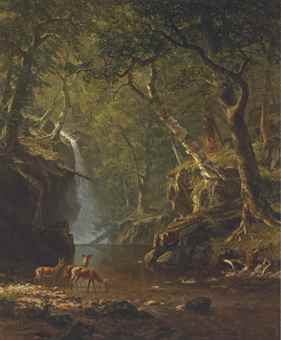
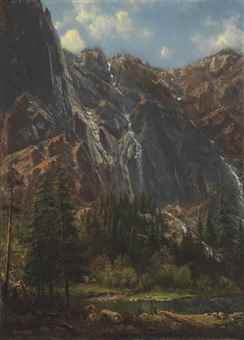
.jpg)
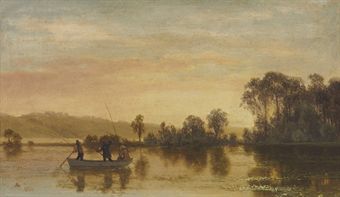
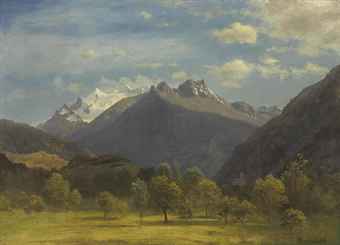
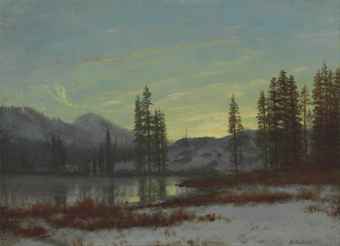
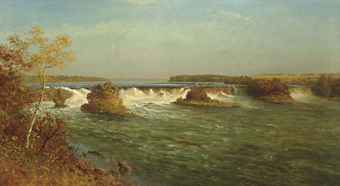
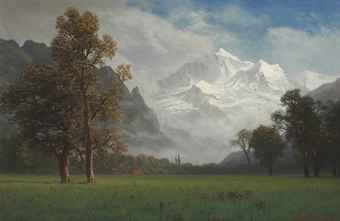

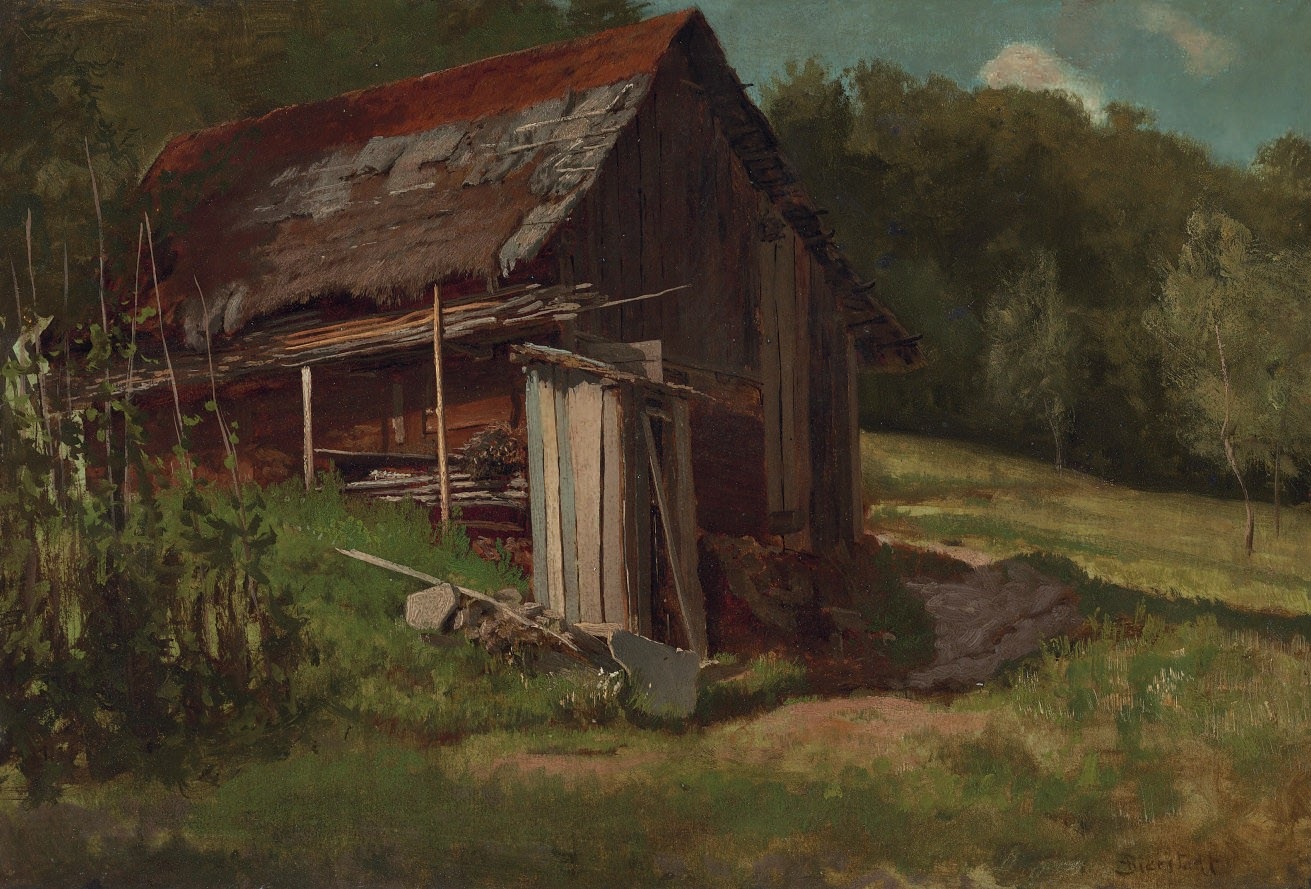

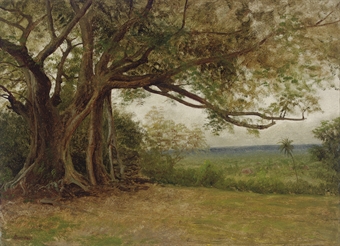

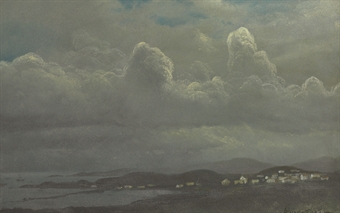
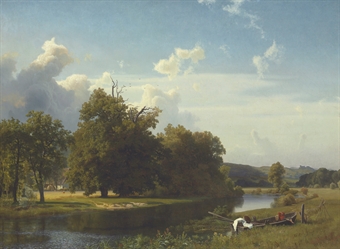
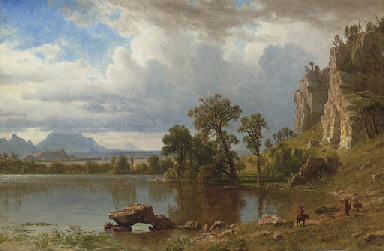
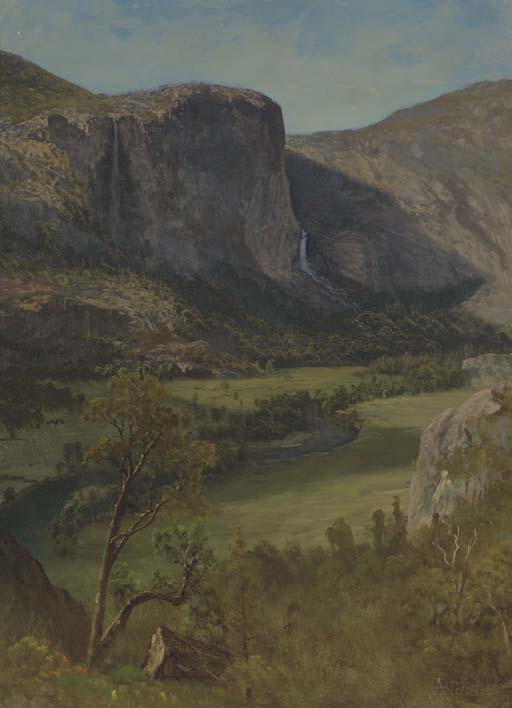

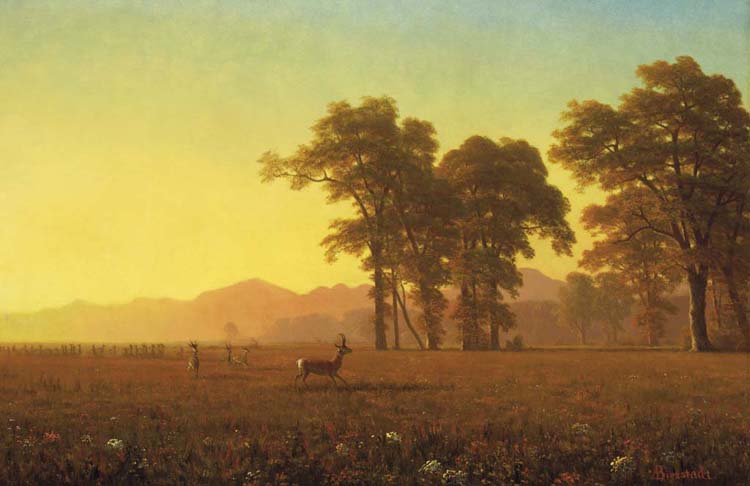
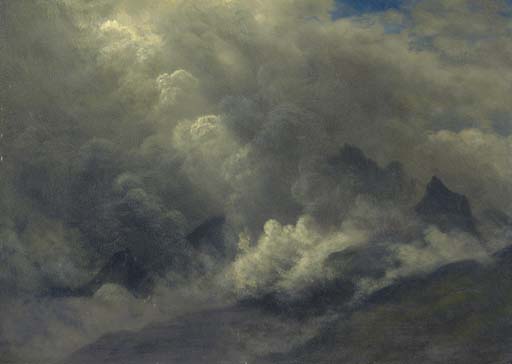
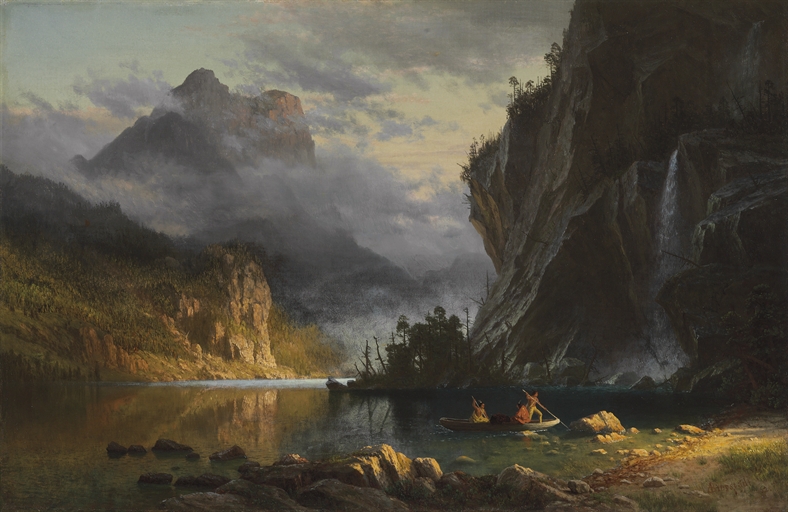
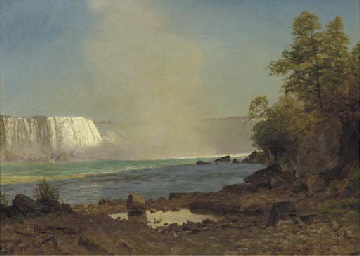
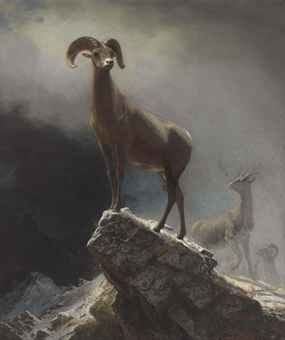






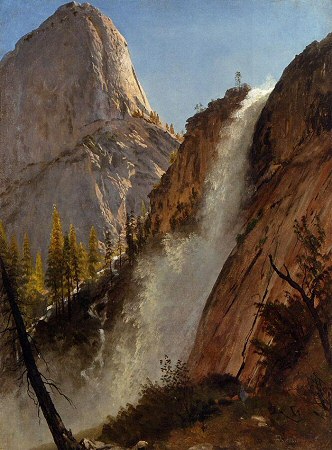

.jpg)
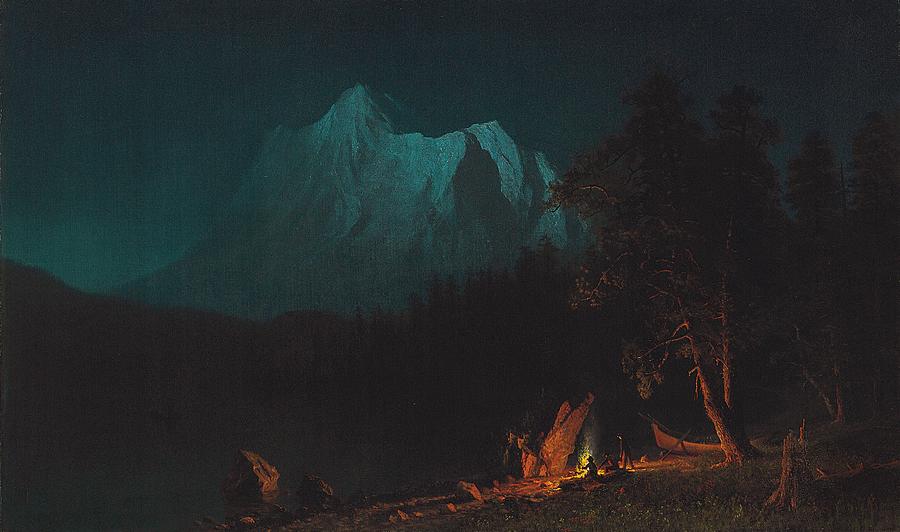
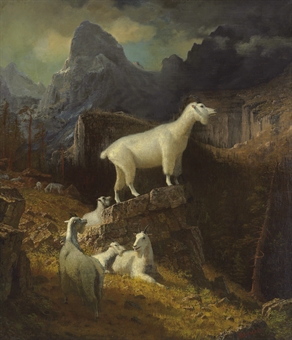
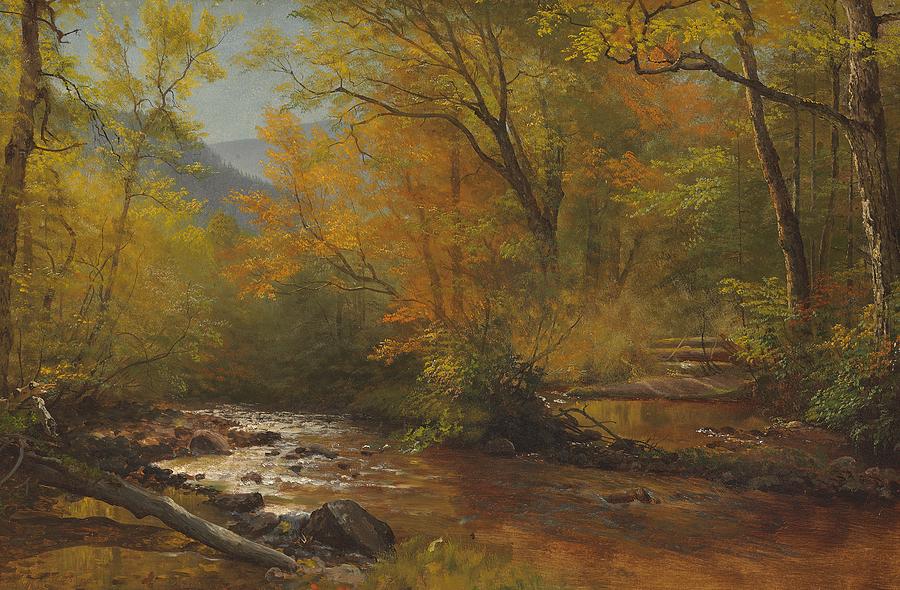



.jpg)



